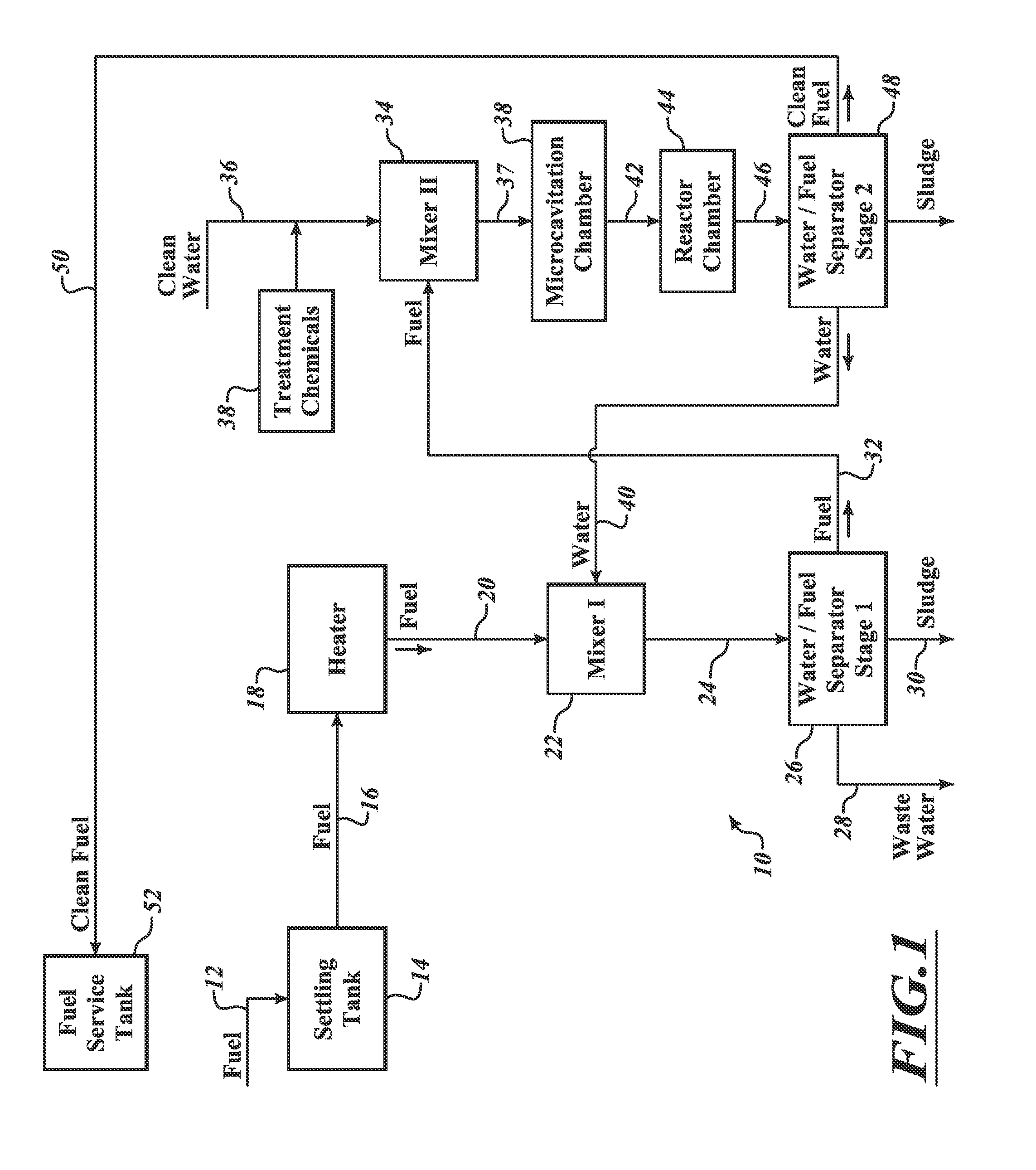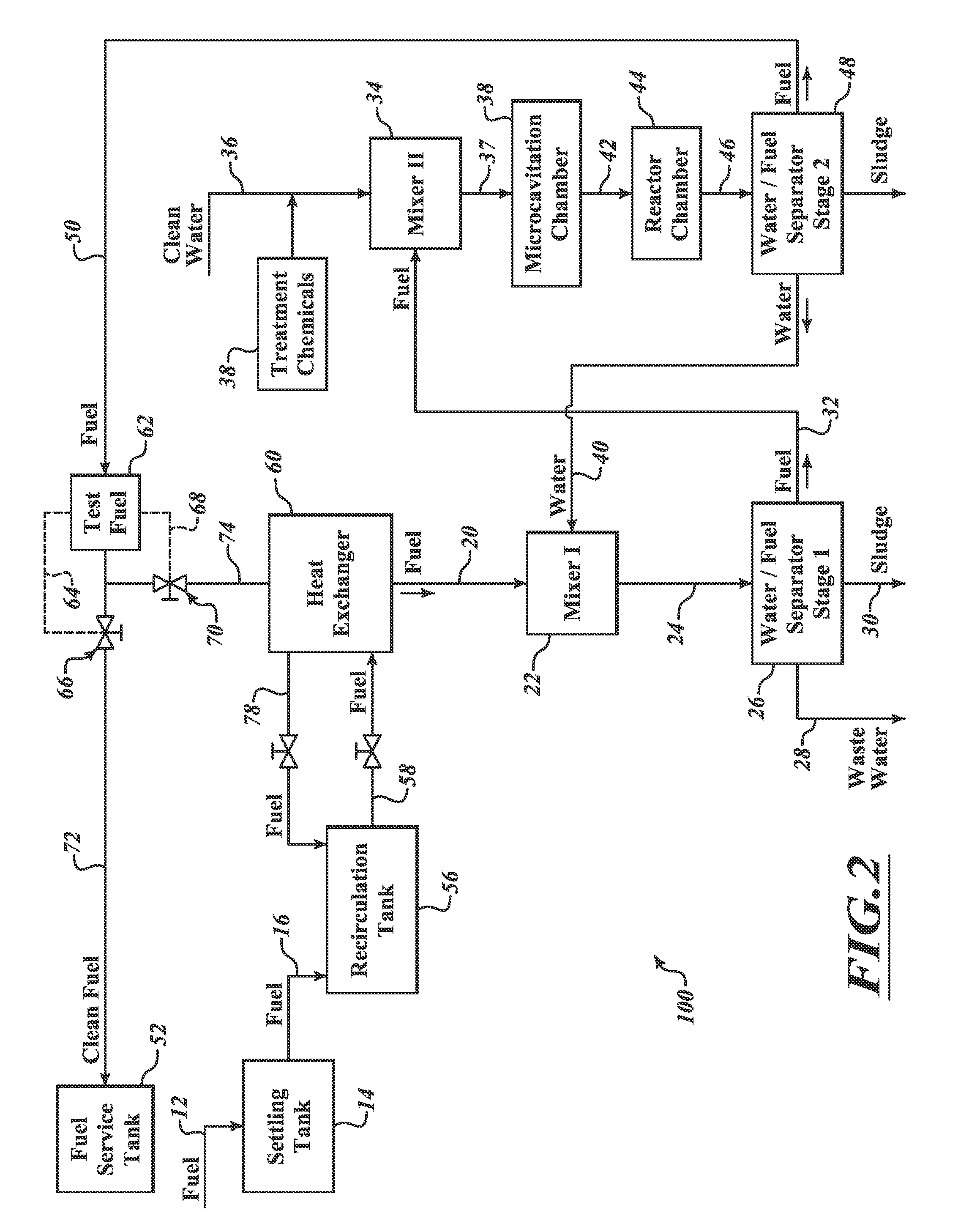Removal of contaminants from bunker oil fuel
- Summary
- Abstract
- Description
- Claims
- Application Information
AI Technical Summary
Benefits of technology
Problems solved by technology
Method used
Image
Examples
Embodiment Construction
[0023]FIG. 1 is a block diagram of an apparatus 10 that is a system for cleaning bunker fuel to drive diesel engines of large cargo ships according to one embodiment.
[0024]The apparatus 10 has a fuel intake location 12 in which uncleaned bunker oil is input to a settling tank 14. The use of settling tanks at the beginning of cleaning systems for bunker fuels are well known in the art and therefore not described in greater detail. The present embodiment is an improvement upon a system that is the subject of a patent application previous filed bearing application Ser. No. 12 / 779,385 by the same inventor, Rasmus Norling. It was filed on May 13, 2010, as a continuation of an application filed on Nov. 16, 2008. The Norling application has been published as U.S. Patent Publication No. 2010 / 0276340, published on Nov. 4, 2010 (the '340 Publication”). The '340 Publication is a system for removing salt from fuel oil. The system as described therein is useful for removing such salt, however, i...
PUM
 Login to View More
Login to View More Abstract
Description
Claims
Application Information
 Login to View More
Login to View More - R&D
- Intellectual Property
- Life Sciences
- Materials
- Tech Scout
- Unparalleled Data Quality
- Higher Quality Content
- 60% Fewer Hallucinations
Browse by: Latest US Patents, China's latest patents, Technical Efficacy Thesaurus, Application Domain, Technology Topic, Popular Technical Reports.
© 2025 PatSnap. All rights reserved.Legal|Privacy policy|Modern Slavery Act Transparency Statement|Sitemap|About US| Contact US: help@patsnap.com



